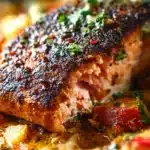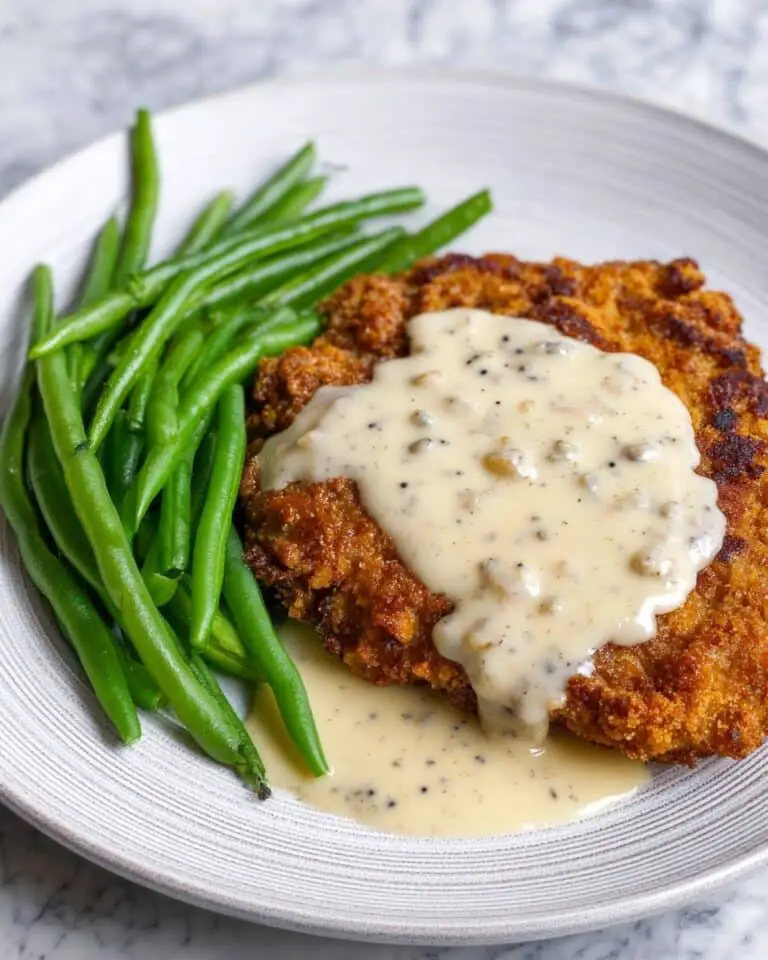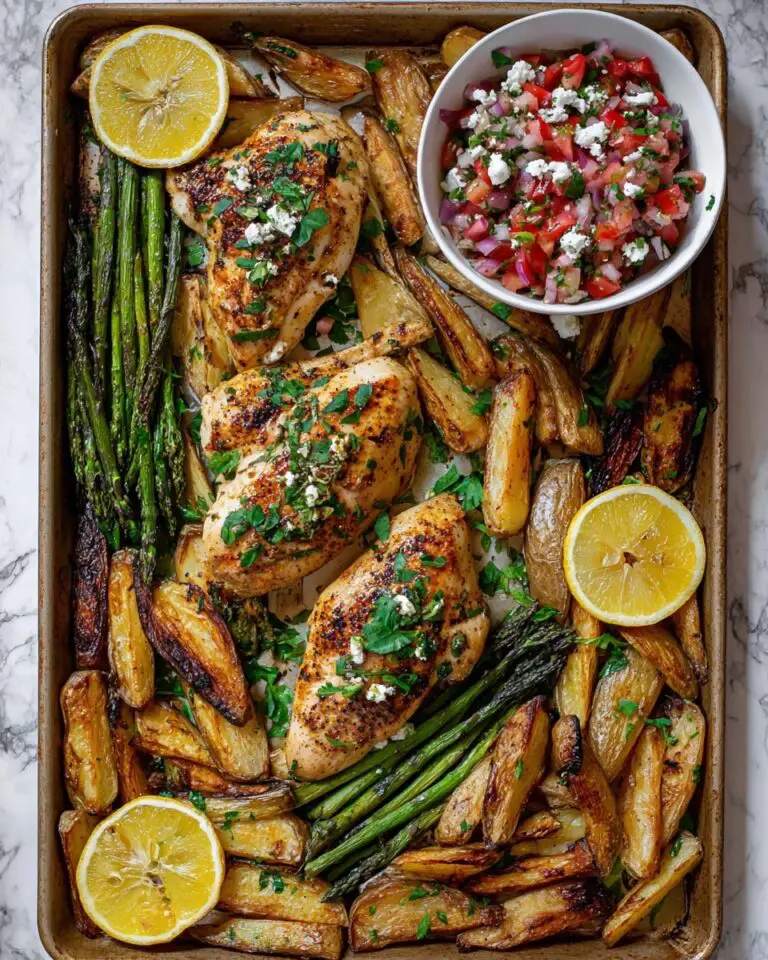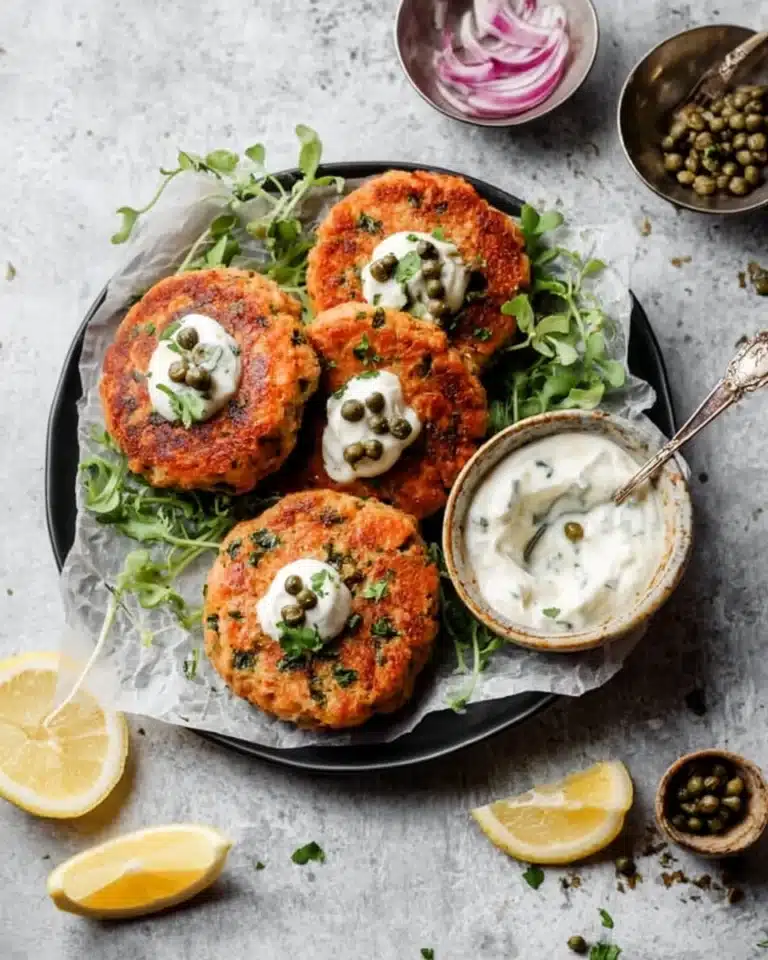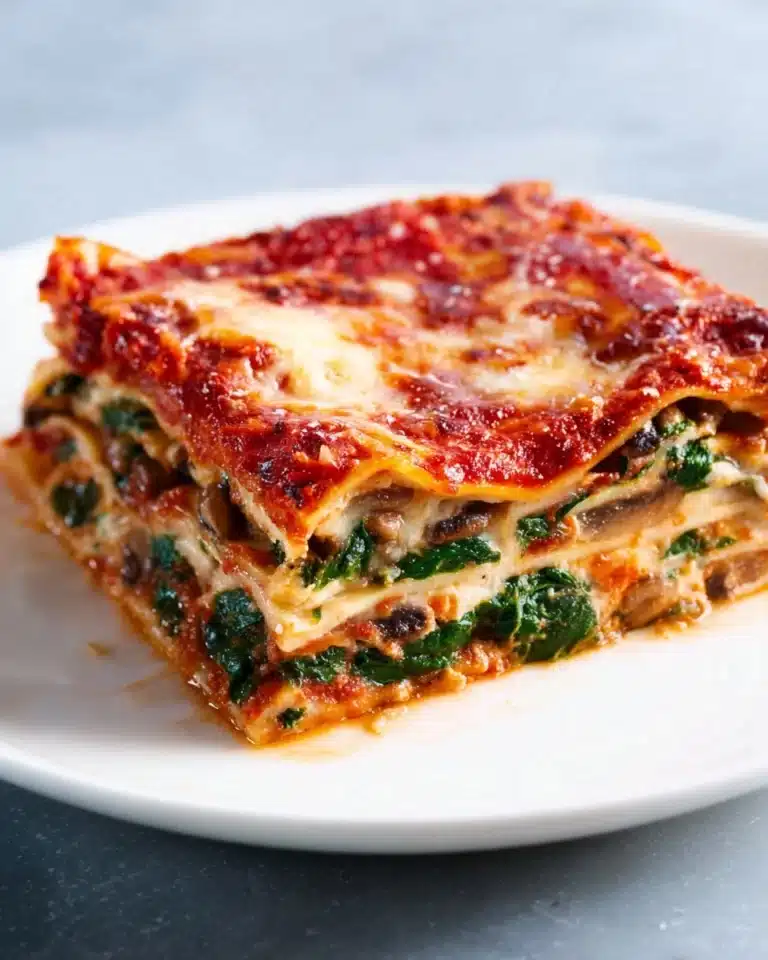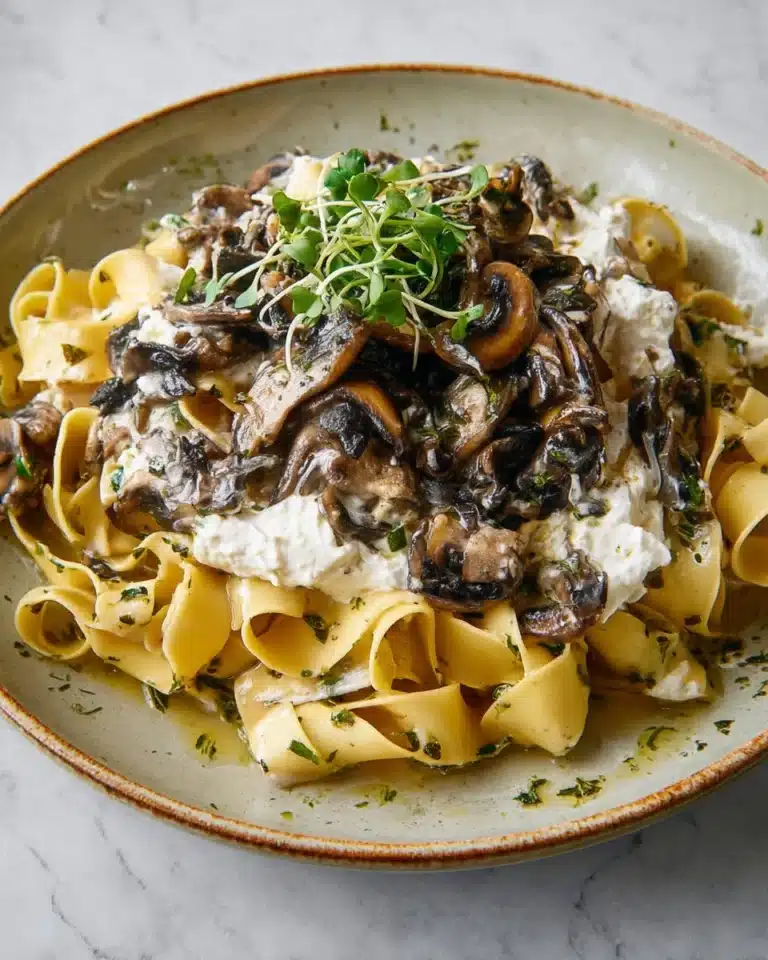If you’re looking to spice up your dinner rotation, Cajun Salmon is that show-stopping, crowd-pleasing main course that just can’t go unnoticed. This dish brings the smokiness and robust seasoning of Southern-inspired cuisine straight to your table, marrying tender, buttery salmon fillets with a silky, veggie-packed cream sauce. Every forkful is a fiesta of flavors, thanks to a carefully crafted blend of herbs, spices, and the zing of fire-roasted tomatoes. Whether you’re a salmon devotee or just looking to try something new, Cajun Salmon promises a meal that’s downright irresistible and surprisingly simple to pull together.
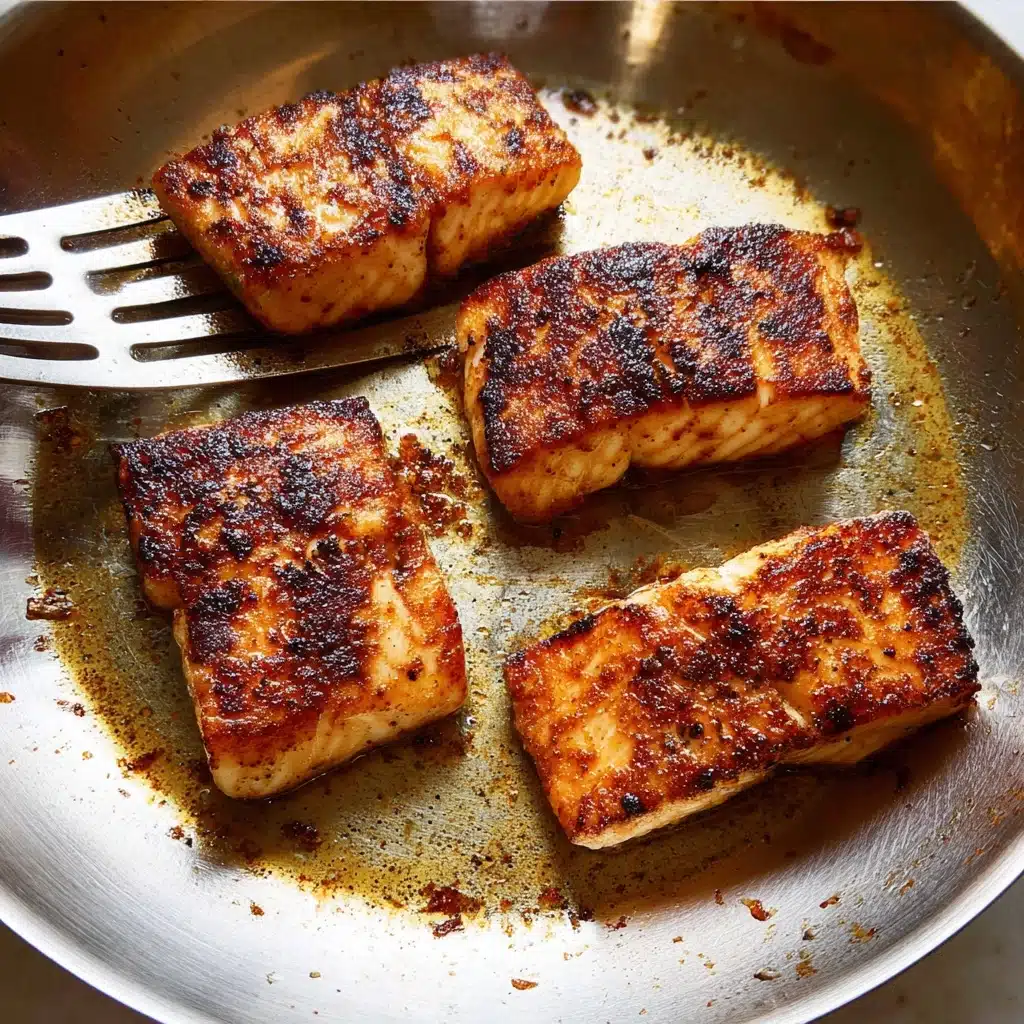
Ingredients You’ll Need
The beauty of Cajun Salmon is how it creates bold flavors from pantry staples and fresh ingredients. Each component is thoughtfully chosen to complement the others, from the juicy salmon fillets to the punchy Cajun spice mix and that luscious, creamy sauce.
- Salmon fillets: Opt for 4 skinless fillets, each about 6-8 oz., to get the best texture and flavor in every bite.
- Olive oil: This keeps your salmon moist and helps those Cajun spices adhere beautifully.
- Melted butter (optional): For an extra layer of richness and depth, brush it on before seasoning.
- Smoked paprika: Adds a smoky warmth that’s essential to Cajun flavor.
- Garlic powder & onion powder: These build the savory backbone for your seasoning blend.
- Salt: A must for seasoning every layer just right.
- Dried oregano & dried thyme: Earthy herbs that give a slight hint of Mediterranean brightness.
- Black pepper: A touch of heat with a peppery kick.
- Cayenne pepper: The crucial element for real Cajun heat – use 1/4 tsp for mild, 1/2 tsp if you want more fire.
- Garlic cloves (4, minced): Aromatic and flavorful, these truly elevate the sauce.
- Bell peppers (2, any color): Chopped into 1-inch pieces for sweetness, crunch and a pop of color.
- Red onion (1/2, chopped): Gives the sauce a mild, tangy note and eye-catching color.
- Low sodium chicken broth (1 1/2 cups): The base for a flavor-packed, not-too-salty sauce.
- Cornstarch (1 tbsp): For thickening your Cajun cream sauce to velvety perfection.
- Heavy cream or evaporated milk (1 cup) + 1 tsp cornstarch: Creamy decadence and body for the sauce.
- Fire roasted diced tomatoes (3/4 cup, drained): Adds smokiness and subtle acidity.
- Lime juice (1 tbsp): Brightens up the dish and balances out the creamy richness.
- Parmesan cheese (1/2 cup, freshly grated): A final touch for umami and creamy depth.
How to Make Cajun Salmon
Step 1: Prep and Season the Salmon
Start by gently patting your salmon fillets dry with a paper towel. Brush both sides lightly with olive oil—or melted butter if you’re feeling indulgent. Mix up your Cajun spice blend in a bowl, then scoop out two tablespoons to rub generously over every surface of each salmon fillet. Let the spices infuse while you prepare the other ingredients, and save the rest of the seasoning for your cream sauce.
Step 2: Sear the Salmon
Heat a large, heavy-bottomed skillet over medium-high heat, drizzling in a tablespoon of olive oil. Place the seasoned salmon flesh-side down once the pan is good and hot, then lower the heat to medium. Cook for around 4 minutes until a gorgeous blackened crust has formed, then carefully flip and sear the other side for 3-6 more minutes, depending on your preferred level of doneness and the thickness of your salmon. Transfer the fillets to a plate and tent loosely with foil while you tackle the sauce.
Step 3: Sauté the Veggies
Without wiping out the pan (those browned bits are flavor gold!), add more olive oil if needed to reach 1 tablespoon. Toss in the chopped red onion and sauté for about 3 minutes until it starts to look translucent. Then add your colorful bell peppers, minced garlic, and the reserved Cajun spice mix, letting everything mingle and become fragrant for another 2 minutes.
Step 4: Build the Cream Sauce
Pour in about half the chicken broth, using it to deglaze the pan and capture every last delicious crumb. In a separate bowl, whisk the remaining broth with cornstarch until smooth, then add that to the pan, followed by the heavy cream (or evaporated milk + a touch of cornstarch). Stir in the drained fire roasted tomatoes and bring the whole mixture to a gentle simmer, stirring occasionally until the sauce thickens irresistibly.
Step 5: Finish and Serve
Lower the heat and whisk in the freshly grated Parmesan until it’s melted and the sauce is creamy and glossy. Finish with a splash of lime juice for brightness. Gently place the seared Cajun Salmon fillets back into the skillet, sprinkle on a bit of fresh parsley if you’ve got it, and let everything heat through for another minute or so. Get ready to dig in—your kitchen should smell absolutely amazing!
How to Serve Cajun Salmon
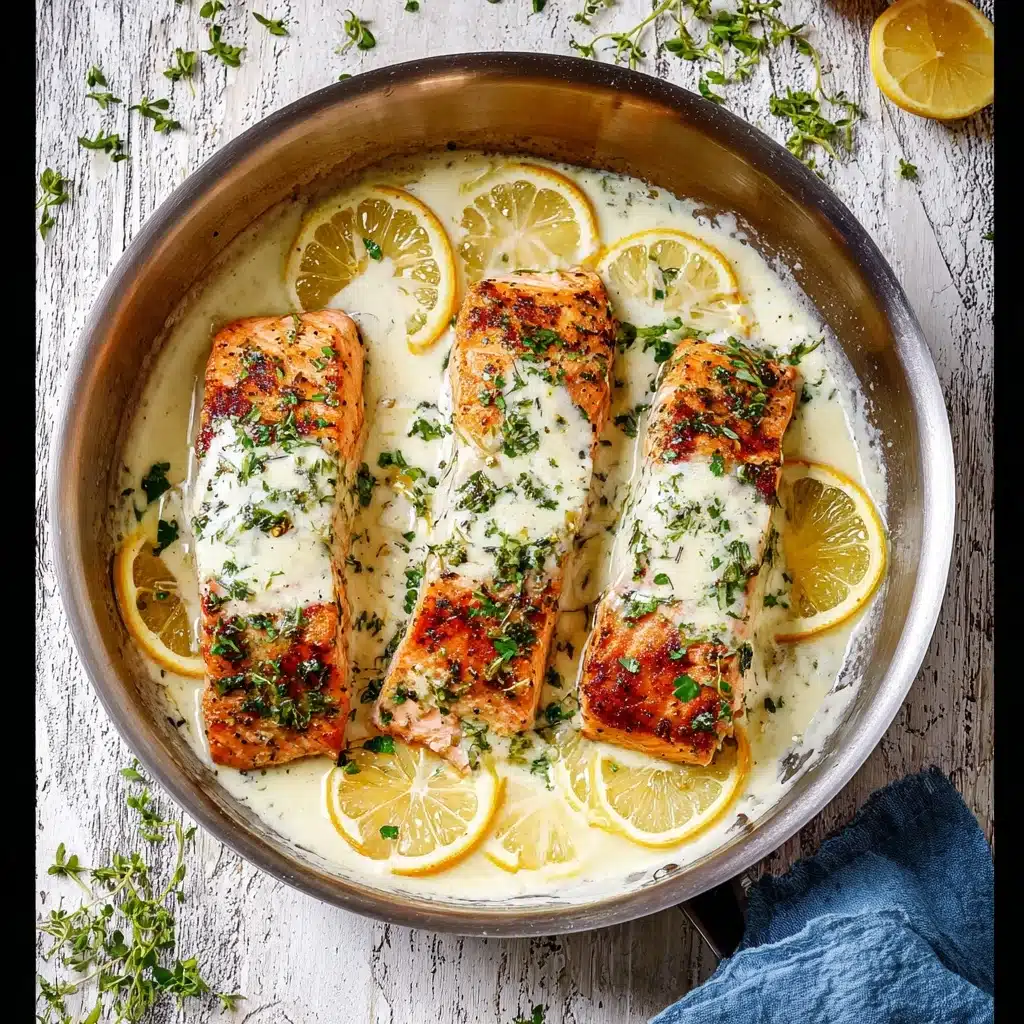
Garnishes
Nothing sets off Cajun Salmon like a sprinkling of fresh parsley or chopped cilantro, a few extra lime wedges, or even a scatter of thinly sliced green onions. Not only do these garnishes add vibrant color, they also bring a welcome burst of fresh flavor to contrast the rich, spicy cream sauce.
Side Dishes
Cajun Salmon pairs wonderfully with classic Southern sides. Think fluffy white or brown rice to soak up that sauce, some roasted potatoes for heft, or simple sautéed greens like spinach or collards. If you like it lighter, a crisp green salad with a citrusy vinaigrette is a no-fail option.
Creative Ways to Present
Try serving Cajun Salmon atop creamy mashed cauliflower for a lower-carb twist, or tuck pieces into tacos with slaw for a fun, casual flare. For entertaining, slice the fillets into smaller portions and serve over crostini as a hearty, flavor-packed appetizer.
Make Ahead and Storage
Storing Leftovers
Leftover Cajun Salmon keeps best when stored in an airtight container in the refrigerator. The fish and sauce should be cooled to room temperature before refrigerating, and they’ll stay fresh and flavorful for up to 2 days.
Freezing
If you want to freeze Cajun Salmon, it’s best to freeze the salmon fillets and the cream sauce separately for optimal texture. Wrap the cooled fillets well in foil or plastic wrap, place in a freezer-safe bag, and store for up to two months. The sauce can be frozen in an airtight container, though the cream may separate slightly when thawed—just stir it well while reheating.
Reheating
To reheat Cajun Salmon, warm the fillets gently in a skillet with a splash of chicken broth or cream to prevent dryness. The sauce should also be reheated slowly over low heat, stirred frequently until smooth and heated through. Avoid microwaving if possible, as it can make the salmon tough and separate the sauce.
FAQs
Can I use frozen salmon for Cajun Salmon?
Absolutely! Just be sure to thaw the salmon completely and pat it very dry before seasoning and cooking. This helps achieve that perfect seared crust and prevents excess moisture from watering down the spicy rub.
How spicy is this Cajun Salmon recipe?
The beauty of Cajun Salmon is that you control the heat. With only 1/4 teaspoon cayenne, it’s mildly spicy, but you can bump it up to 1/2 teaspoon (or more) if you love it hot. Feel free to taste your spice mix and adjust before rubbing it on the fish.
Can I substitute the heavy cream?
Yes! If you’re looking to lighten things up or avoid dairy, evaporated milk works nicely, or even full-fat coconut milk for a subtle twist. Just note, any swaps may slightly alter the flavor and texture of your Cajun Salmon sauce.
Is it okay to leave the skin on the salmon?
For traditional Cajun Salmon, the recipe works best with skinless fillets so you get maximum spice coverage and even searing. But if you prefer, you can use skin-on salmon and simply serve the fillets skin-side down—just watch that the skin crisps up nicely in the pan.
Can I make the sauce in advance?
Definitely! The Cajun cream sauce for Cajun Salmon can be made up to a day ahead and refrigerated. Just reheat gently on the stove before adding the pan-seared salmon back in, and adjust the consistency as needed with an extra splash of broth or cream.
Final Thoughts
I can’t recommend making Cajun Salmon enough—it’s just one of those dishes that always leaves people asking for the recipe. With its bold, comforting flavors and dreamy cream sauce, it has a way of elevating any occasion, yet comes together so easily on a weeknight. Give it a try soon, and don’t be surprised if Cajun Salmon becomes your new dinner obsession!
PrintCajun Salmon Recipe
This Cajun Salmon recipe features perfectly blackened salmon fillets topped with a creamy, flavorful sauce infused with bell peppers, garlic, and spices. A delicious and easy-to-make dish that’s sure to impress!
- Prep Time: 15 minutes
- Cook Time: 15 minutes
- Total Time: 30 minutes
- Yield: 4 servings
- Category: Main Course
- Method: Pan-Frying, Simmering
- Cuisine: American
- Diet: Gluten Free
Ingredients
Salmon
- 4 (6-8 oz. each) skinless salmon fillets
- olive oil
- melted butter (optional)
Blackened Seasoning
- 2 tsp EACH smoked paprika, garlic powder, onion powder
- 1 teaspoon salt
- 1 tsp EACH dried oregano, dried thyme
- 1/2 teaspoon pepper
- 1/4–1/2 teaspoon cayenne pepper
Cream Sauce
- 4 garlic cloves, minced
- 2 bell peppers (any color combo), chopped into 1” pieces
- 1/2 medium red onion, chopped
- 1 1/2 cups low sodium chicken broth
- 1 tablespoon cornstarch
- 1 cup heavy cream or evaporated milk + 1 tsp cornstarch
- 3/4 cup fire roasted diced tomatoes, well drained
- 1 tablespoon lime juice
- 1/2 cup freshly grated Parmesan cheese
Instructions
- Brush Salmon: Lightly brush salmon all over with olive oil or melted butter.
- Mix Spice Rub: Combine all Blackened Seasoning ingredients. Rub 2 tablespoons evenly over salmon.
- Cook Salmon: Sear salmon in a skillet until crispy and blackened. Cook to desired doneness, then set aside.
- Prepare Sauce: In the same skillet, sauté onions, bell peppers, and garlic. Add remaining spice rub, chicken broth, cornstarch mixture, cream, and tomatoes. Simmer until thickened.
- Finish Dish: Stir in Parmesan, lime juice, and return salmon to the skillet to heat through. Season to taste and garnish before serving.
Notes
- Adjust the cayenne pepper to control the spiciness of the dish.
- For a lighter option, use evaporated milk instead of heavy cream.
- Serve over rice or with a side of vegetables for a complete meal.
Nutrition
- Serving Size: 1 fillet
- Calories: 450
- Sugar: 4g
- Sodium: 800mg
- Fat: 29g
- Saturated Fat: 12g
- Unsaturated Fat: 14g
- Trans Fat: 0g
- Carbohydrates: 10g
- Fiber: 2g
- Protein: 38g
- Cholesterol: 120mg

